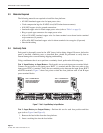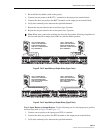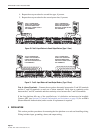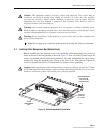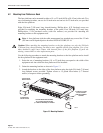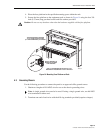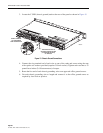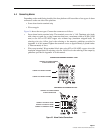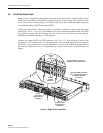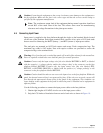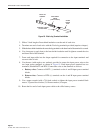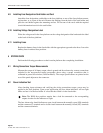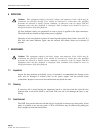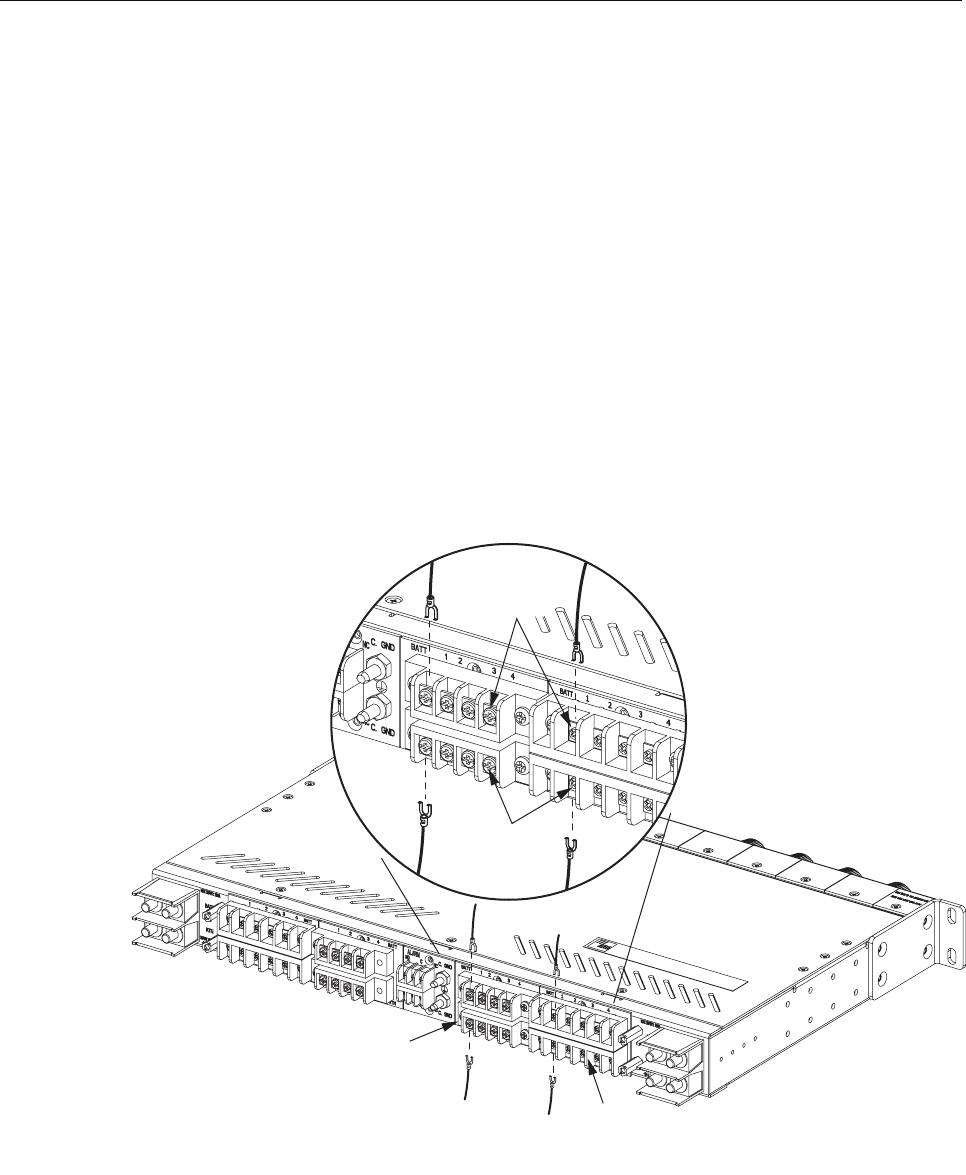
ADCP-80-526 • Issue 6 • December 2006
Page 22
© 2006, ADC Telecommunications, Inc.
4.5 Connecting Output Power
Output power is supplied to the equipment through screw-down barrier terminal strips located
on the rear of the chassis. Each bus has separate strips for each fuse type. The terminal screws
are of various sizes corresponding to the current load of the fuses. Each individual output has
two terminals, battery (BATT) and return (RTN).
Connections are typically made using ring or spade-type connectors crimped onto the output
power wires. Table 1 on page 8 gives terminal screw size, maximum terminal width, and AWG
# accepted for copper wire. In selecting wire size, follow local code referring to the ampacity
guidelines provided in Appendix A of this manual.
Connect the output BATT and RTN terminals (see Figure 17) for each fused circuit to the
appropriate set of terminal strips. Use the appropriate wire size with appropriate size crimp-on
spade lugs or ring connectors or use the appropriate size wire with insulation stripped back at
the wire end. Tighten the screws to approximately 9 pound force-inches (1 Newton-meter) of
torque.
Figure 17. Output Power Connections
18869-A
BUS A
GMT FUSED
POWER OUTPUT
TERMINALS
BUS A
KLM/KTK FUSED
POWER OUTPUT
TERMINALS
TIGHTEN TERMINAL SCREWS
TO 15 POUND-FORCE INCHES
(1.7 NEWTON METERS)
OF TORQUE
DETAIL DRAWING OF OUTPUT
TERMINAL BLOCK CONNECTIONS
POWER
RETURN
TERMINALS
POWER
FEED
TERMINALS



